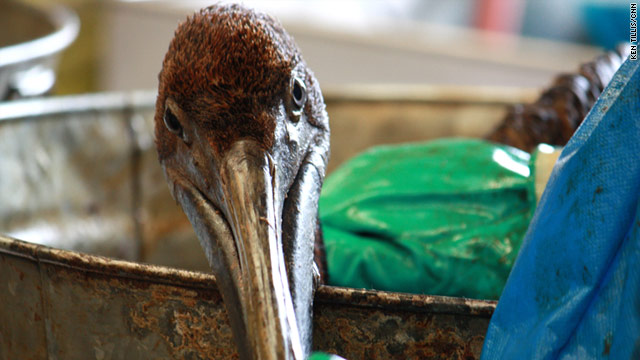Year after Gulf oil spill, group gives mixed report card for wildlife

- The National Wildlife Federation releases a report on the Gulf a year after the spill
- The federation finds some species recovering, while others need help
- The report says Gulf factors in place before the spill also combine to hurt wildlife
- The report calls on Congress to take actions toward helping Gulf restoration efforts
(CNN) -- Nearly a year after the start of the Gulf of Mexico oil spill, some wildlife is recovering, while other species could need significant help, according to a National Wildlife Federation study released Tuesday.
The current status of the coastal wetlands -- where a wide variety of animals live or breed -- is classified in the report as "poor," with that classification based on several factors in place before the April 20, 2010, explosion on the drill rig Deepwater Horizon killed 11 workers and triggered what scientists say was the worst oil spill in U.S. history. Even before the spill, the area was hard hit due to erosion, storms and river channeling.
The federation says the spill caused 3,000 miles of beaches and wetlands to be contaminated by varying amounts of oil. Even the efforts to clean it up can cause damage. Combining all factors before and since the spill, the report's author, Douglas Inkley, writes that if there isn't a massive coastal restoration, "Louisiana will have lost an area of coastal wetlands larger than the state of Rhode Island" by 2050.
"Experience with other disastrous oil spills tells us that the damage is far from over," the report says.
Bouncing back from catastrophe
"What is clear is that the disaster response has focused on removing oil, with little action taken to address the long-term wetlands habitat degradation exacerbated by the oil disaster."
Sea turtles and Atlantic bluefin tuna are among the species currently classified in poor condition.
"In terms what I'm more concerned about; I would go straight to the sea turtles," Inkley said Tuesday.
Before the spill, four of the five species of sea turtles in the Gulf were endangered. The report notes during the spill "sea turtle strandings were 8 times higher than the 22-year average."
It's unclear how many animals actually died, but "of 609 known dead, 481 were Kemp's Ridley Sea Turtles, the most endangered sea turtle species in the world," the report says. It goes on to say that in addition to the loss of population, the turtles continue to be at risk due to impact on their habitat, climate change and accidentally being caught by commercial fishing boats.
The wildlife federation says even before the spill, the tuna population was in decline due to overfishing. The animals only breed twice a year, and the spill took place in one of their breeding seasons.
The report says "contact with oil may have reduced the number of juvenile bluefin produced in 2010 by 20 percent." The National Wildlife Federation calls for restrictions or a halt on commercial fishing of the animals until they recover.
Photos from the Gulf oil spill
The situation for other animals is more promising.
Brown pelicans had been recovering prior to the spill and were removed from the endangered species list in 2009. During the spill more than 700 were found in the area, with two-thirds of those dead. Despite that and the ongoing threat from loss of habitat from the oil, climate change and storms, their status in the Gulf is classified by the federation as "good."
Another "good" species is shrimp. The report cites experts saying shrimp "catch levels are likely to recover to recent pre-spill harvest levels by the end of 2012" but it also acknowledges the continued impact on populations due to the degraded wetlands.
Dolphin strandings were up five times the normal rate during the spill, according to the report. It goes on to add that despite the spill "the overall status of dolphins in the Gulf is good," though, "reduced fitness of adults and reproductive failure could spell trouble for the future."
The total impact of the spill, however, is still not certain. George Crozier, director of Dauphin Island Sea Lab says, "It will be critical to monitor these key species in the months ahead, especially given the unknown impacts of weathered and 'dispersed' oil remaining in the Gulf."
In fact, Inkley, said Tuesday, "The effects will be long-lasting. This Gulf oil disaster is far from over." He points to the Exxon Valdez spill in Alaska 1989, which was on a much smaller scale and is still unfolding.
The National Wildlife Federation calls for several actions that should be taken to solve the problems highlighted in the report. It calls on Congress to dedicate fines from the spill to Gulf restoration, develop programs to stop wetland loss, reform oil and gas leasing, conduct long-term studies and make payments toward restoration efforts more quickly.








